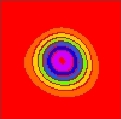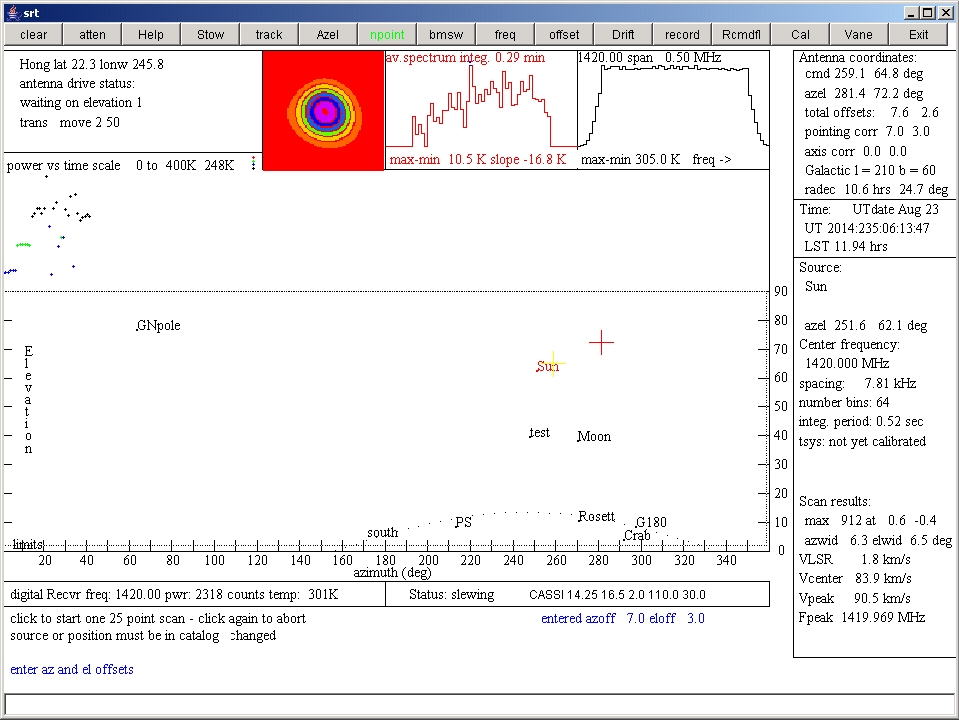About SRT
The Small Radio Telescope (SRT) is developed by the Haystack Observatory, Massachusetts Institute of Technology (MIT), as an inexpensive radio astronomy kit which provides everything needed to introduce students and amateur astronomers to the field of radio astronomy. The SRT is a continuum and spectral line radio telescope of observations in the L-band (1.42 GHz) and it was available as a kit from CASSI Corp. The SRT composes of a standard 2.3 meter diameter satellite television dish which mounted on a motorized Az-El mount. Controlling software was provided for free by Haystack Observatory for controlling the antenna and selection of sources. Data can be stored in plain text format and can be reduced by various softwares.
For more details, please refer to:
Specifications
| Features | Parameters |
|---|---|
| Aperture | 2.3 Meters |
| LO Frequency Range | 1370 - 1800 MHz |
| LO Tuning Step | 40 kHz |
| Preamp Frequency Range | 1400 - 1440 MHz |
| System Temperature | 150 K |
| Pointing Accuracy | 1 Degree |
| Travel Limits (degrees) | 0-360 Azimuth/~0-90 Elevation |
Observation mode
| Mode | bin spacing (kHz) | number of binning | bandwidth (MHz) |
|---|---|---|---|
| 1 | 7.81250 | 64 | 0.5 |
| 2 | 3.90625 | 64 | 0.25 |
| 3 | 1.95312 | 64 | 0.12 |
| 4* | 7.81250 | 156 | 1.22 |
The 25–point scan
The 25-point scan is a special observational mode of the SRT, which scans the region around the selected object using 25 pointings, each offsets in 3 to 5 azimuth and elevation degrees. An example pattern:
Scan offsets

Scan result map
Control software
The SRT control software is a JAVA-based program which displays the current status and information on the mount and receiver. A simplified sky map showing the major radio sources and pointing position of SRT helps the operation of SRT. Spectra and 25-point scan map are also displayed at the top. Through the control panel, user can easily operate the SRT via mouse clicks and/or line commands.